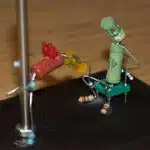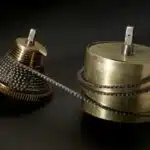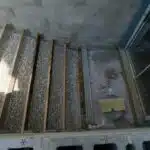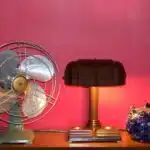Electrical outlets are an essential component of our daily lives, powering multiple devices and appliances. However, it is not uncommon to encounter crooked outlets in homes or offices, which can pose safety hazards and affect the aesthetics of a space. As electrical engineers, it is our responsibility to ensure that all outlets are installed correctly and functioning properly.
Straightening crooked outlets may seem like a simple task; however, it requires attention to detail and knowledge of electrical systems. In this article, we will discuss the reasons why outlets become crooked and how to fix them efficiently. By following these steps, you can ensure the safety of your home or office and also enhance its appearance.
Common Causes Of Crooked Outlets
As the adage goes, “prevention is better than cure.” When it comes to electrical outlets, crookedness can be a common issue. The causes of crooked outlets can range from improper installation to wear and tear over time. One of the primary reasons for crooked outlets is incorrect installation. If an electrician doesn’t line up the box correctly with the wall, or if they don’t screw in the outlet securely, it may result in a crooked outlet.
Another cause of crooked outlets is excessive force when plugging and unplugging appliances. Pulling cords out roughly or yanking them out at an angle can lead to stress on the outlet, which may eventually cause it to become crooked. Similarly, if children or pets play around electrical outlets, they might accidentally bump into them, causing them to shift off-center and become misaligned.
Preventing these causes from happening is essential in avoiding having crooked outlets. Proper installation by a licensed electrician ensures that your outlets are installed correctly and securely. Additionally, using cord organizers and gentle handling of cords when plugging and unplugging appliances will prevent undue stress on the outlet. Finally, teaching children about electrical safety will help prevent any accidents that could damage your home’s electrical system. In the next section, we’ll discuss safety risks associated with crooked outlets and how to address them effectively without risking personal injury or property damage.
Safety Risks Of Crooked Outlets
Crooked outlets can pose significant safety risks in a building. These hazards may not be immediately noticeable, but they can lead to severe electrical problems if left unattended. Identifying hazards associated with crooked outlets is essential in preventing damage to electrical systems and ensuring the safety of building occupants.
One of the most common hazards associated with crooked outlets is the risk of electrical fires. Crooked outlets can cause wires to loosen or break, leading to sparks that can ignite flammable materials nearby. Another potential hazard is electrocution, which can occur when improperly installed outlets come into contact with conductive materials such as water or metal. Additionally, crooked outlets may not function correctly, leading to power surges or outages that can damage electrical devices.
Preventative measures can be taken to mitigate the dangers associated with crooked outlets. Regular inspections by licensed electricians are vital for identifying and correcting any issues before they become major problems. Building owners should also encourage their occupants to report any signs of malfunctioning or damaged electrical fixtures promptly. Finally, proper installation and maintenance of electrical systems are critical for minimizing hazards related to crooked outlets.
In summary, it is crucial for building owners and occupants alike to understand the risks associated with crooked outlets and take preventative measures accordingly. By staying vigilant about identifying potential hazards and investing in regular maintenance and repair services, individuals can help protect themselves from the dangers posed by faulty electrical systems. Next, we will explore how understanding electrical systems’ basic principles is essential in maintaining a safe and functional building infrastructure.
Understanding Electrical Systems
Reading electrical diagrams requires the ability to interpret symbols to comprehend how electrical components are connected. Wiring safety protocols must be followed in order to minimize the risk of electric shock during installation. Working with circuits requires knowledge of how electricity flows through different components. Wiring materials must be selected according to their suitability for specific applications. Electrical measurements must be taken to ensure that current, voltage and resistance levels are within the specified range. Troubleshooting must be done to identify and rectify faults in electrical systems.
Reading Electrical Diagrams
Electrical systems are complex networks of wires, switches, and components that work together to provide power to homes and businesses. As an electrical engineer, it is crucial to understand the various components that make up an electrical system. One of these important components is electrical diagrams, which are used to help visualize circuits and identify potential issues.
Electrical symbols are a key component of electrical diagrams. These symbols represent the various components of a circuit, including switches, resistors, capacitors, and more. By understanding these symbols and their meanings, electrical engineers can quickly analyze a circuit diagram and identify any potential issues or areas for improvement.
Circuit analysis is another essential skill in understanding electrical systems. This involves using mathematical equations and principles to analyze a circuit’s behavior under different conditions. With this knowledge, engineers can optimize a circuit’s performance or troubleshoot any problems that may arise.
In conclusion, understanding electrical diagrams and circuit analysis is crucial for any electrical engineer working with electrical systems. By mastering these skills and applying them in practice, engineers can design efficient circuits that meet the needs of their clients while also ensuring safety and reliability.
Wiring Safety Protocols
Understanding electrical systems goes beyond knowing about electrical diagrams and circuit analysis. It also involves ensuring that wiring safety protocols are in place. As an electrical engineer, it is vital to follow code regulations and best practices for DIY projects to ensure that the wiring system is safe and reliable.
Code regulations are put in place to ensure that all wiring systems meet specific safety standards. These standards include proper insulation, grounding, and protection against overloading. Electrical engineers must be familiar with these regulations to guarantee that their designs comply with these requirements.
For DIY enthusiasts, it is essential to follow best practices when working on electrical systems. This includes turning off power at the main circuit breaker before starting any work, using appropriate tools and equipment, and wearing protective gear such as gloves and goggles. By following these practices, individuals can minimize the risk of injury or damage to their homes’ electrical systems.
Working With Circuits
Understanding electrical systems requires knowledge of not only electrical diagrams and code regulations but also working with circuits. Working with circuits involves the proper placement of outlets and wiring techniques to ensure a safe and reliable system. Electrical engineers must be familiar with these practices to guarantee that their designs meet specific safety standards.
Outlet placement is a vital aspect of working with circuits. The location of outlets should be strategically placed for convenience while considering safety regulations. For instance, outlet placement in bathrooms and kitchens must comply with strict codes to prevent accidental electrocution due to water exposure. Electrical engineers must have a thorough understanding of these regulations to ensure the correct placement of outlets in any building or structure.
Wiring techniques are another critical aspect of working with circuits. Proper wiring techniques involve ensuring that all wires are correctly connected, insulated, and grounded according to code regulations. Any mistakes in wiring can lead to overloaded systems, which can damage appliances or even cause fires. As such, it is important for electrical engineers to be familiar with best practices when it comes to wiring techniques. By following these practices, they can design safe and reliable electrical systems that meet the needs of their clients while prioritizing safety above all else.
Tools Needed For Straightening Outlets
Understanding Electrical Systems is crucial for any DIY electrical project. As a responsible homeowner, one must know how to fix electrical issues like crooked outlets. Outlet alignment techniques are easy to learn and can be done with the right tools. Before starting the process, it is important to prepare adequately.
DIY tools for straightening outlets are readily available in hardware stores or online shops. A variety of options include outlet shims, levelers, and straightening tools that can be used for different types of outlets. These tools are designed to make the process easier and more efficient.
To straighten crooked outlets, first turn off the power supply from the main circuit breaker. Use an outlet tester to check if there is still electricity running through the outlet before proceeding with the alignment process. Place the chosen tool between the wall and the outlet, gently move it until it aligns correctly, then tighten all screws properly. Reconnect power to test if everything is working as intended.
Before starting any DIY project involving electrical work, safety should always come first. Preparation includes gathering all necessary tools, ensuring power supply is turned off, and wearing protective gear such as gloves or goggles. Proper preparation will help prevent accidents that may cause harm or damage to property.
Transition: Now that we’ve discussed preparation before starting the process let’s dive into step-by-step instructions on how to straighten crooked outlets using different DIY tools.
Preparation Before Starting The Process
Before attempting to straighten crooked outlets, it is important to prepare adequately for the process. This involves measuring alignment and adjusting outlet orientation as necessary. Failure to do so may result in further damage or injury.
Measuring alignment requires a keen eye and steady hand. Use a level or straightedge to check that the outlet cover plate is parallel with the wall surface. If not, adjust the outlet orientation until it is level. It is important to note that some minor deviations from perfect alignment are acceptable, but anything more than 1/8 inch should be corrected.
Adjusting outlet orientation may require some basic electrical knowledge and tools. First, shut off power to the affected circuit at your home’s circuit breaker box before attempting any repairs. Then, remove the cover plate and screws holding the outlet in place. Carefully pull out the outlet from its electrical box without touching any wires. Loosen screws holding wires onto terminals and adjust the angle of the outlet as needed before re-tightening wires and reattaching the cover plate.
- Use a non-contact voltage detector to ensure no electrical current is present.
- Wear insulated gloves when working on outlets.
- Consult an electrician if unsure about any part of this process.
In summary, preparation is key when straightening crooked outlets. Measuring alignment and adjusting outlet orientation are crucial steps in ensuring a safe and successful outcome for this task. Don’t forget to take necessary safety precautions such as shutting off power before proceeding with any repair work on electrical outlets.
Shutting Off Power To Outlets
Preparing for the process of straightening crooked outlets is crucial to ensure a safe and successful outcome. One important step is to gather all necessary tools and materials such as a voltage tester, screwdriver, level, and shims. It is also important to shut off power to the outlets before beginning any work.
To shut off power, locate the circuit breaker that controls the electrical line connected to the outlets. Flip the switch to off position and use a voltage tester to confirm that there is no live current flowing through the wires. This precautionary measure will prevent electric shock or fire hazards during the process.
After shutting off power, proceed with removing outlet covers using a screwdriver. Carefully detach them from the wall without damaging any wires or connections. By following these steps and precautions, one can safely and effectively straighten crooked outlets without causing any harm to themselves or their surroundings.
Removing Outlet Covers
Removing outlet covers is a crucial step when straightening crooked outlets. It allows access to the screws that hold the outlet in place, giving an opportunity to adjust and align it correctly. To remove an outlet cover, one must first turn off the power supply by switching off the circuit breaker or removing the fuse. Next, unscrew the cover plate using a screwdriver and gently pull it away from the wall.
Outlet cover replacement options are available for those who wish to change their current covers or damaged ones. They come in various styles, colors, and materials to complement any room decor. Standard-sized outlet covers are easily found at home improvement stores and online retailers. It is essential to ensure that new covers match existing ones’ size and shape to avoid issues with installation.
Before proceeding with adjusting crooked outlets, it is crucial to handle each step with caution and follow safety guidelines. Loose screws or faulty wiring can cause electrical shocks or fires if handled incorrectly. Therefore, it is recommended that individuals seek professional assistance if unsure about electrical work’s intricacies. In the next section, we will discuss how loosening screws and adjusting outlets can help straighten crooked ones without causing harm or damage.
Loosening Screws And Adjusting Outlets
After removing the outlet covers, the next step is to straighten crooked outlets. This can be accomplished by loosening screws and adjusting the positioning of the outlets until they are level. Adjusting screws is a precise process that requires patience and careful attention to detail.
One important thing to keep in mind when straightening crooked outlets is safety. Always make sure that the power is turned off before attempting any electrical work. This can be done by turning off the circuit breaker for the appropriate area of your home. Once you have ensured that it is safe to proceed, you can begin loosening screws and making adjustments.
It may take some trial and error to get your outlets perfectly level, but with persistence, you should be able to achieve a smooth and even appearance. After making adjustments, it’s important to test each outlet for functionality before putting the covers back on. In the next section, we will discuss how to test outlet functionality and ensure that your electrical system is working properly.
Testing Outlet Functionality
Outlet testing is an essential step in determining the functionality of your electrical outlets. It is crucial to ensure that your outlets are working correctly before plugging in any appliances or electronics. A simple way to test an outlet’s functionality is by using a voltage tester. Ensure that you switch off the power supply, connect one end of the voltage tester to the ground wire and place the other end into one of the outlet slots. The tester should light up, indicating that there is power flowing through the outlet.
If there is no power flow, it could indicate a tripped circuit breaker or blown fuse. Troubleshooting techniques can help you identify and fix these problems quickly. Check if other outlets in the room are functional; if not, it could indicate a circuit breaker issue. On the other hand, if only one outlet has no power, then it may require replacing or rewiring of faulty connections.
In conclusion, testing your electrical outlets regularly is vital to ensure they are working correctly and safely. Troubleshooting techniques can help identify issues with your outlets so you can address them promptly. Once you have tested your outlets and identified any issues requiring repair or replacement, it’s time to move onto replacing outlet covers for a fresh look and added safety features.
Replacing Outlet Covers
According to the National Fire Protection Association, electrical failures and malfunctions cause an average of 45,210 home fires each year in the United States. One way to prevent such occurrences is by replacing outlet covers. While it may seem like a small task, choosing the right cover can make a significant difference in preventing electrical hazards.
When selecting new covers, it is essential to consider safety first. Look for covers that meet national safety standards and are made with durable materials that can withstand frequent use. There are also decorative options available such as covers with various colors or designs that can enhance the aesthetic appeal of any room.
It’s important to note that although replacing outlet covers may seem simple, incorrect installation can lead to potential safety hazards. Before beginning any work, always ensure that the power is off and follow proper installation procedures. Once installed correctly, take time to admire your newly updated outlets and feel confident knowing you have taken an additional step towards creating a safer home environment.
Moving forward with final safety checks, it’s important to verify all outlets are functioning properly and are not overloaded with too many devices plugged into them. Additionally, check for any loose connections or signs of wear on the outlets themselves. Taking these extra precautions will help ensure your electrical system remains safe and reliable for years to come.
Final Safety Checks
After straightening crooked outlets, it is important to conduct final safety checks before plugging in any electrical appliances. One of the most crucial aspects of electrical safety is proper grounding. It ensures that any excess electricity is safely directed away from the circuit and into the ground, preventing electrocution or fires. Therefore, it’s imperative to ensure that all outlets are grounded before using them.
Another essential aspect of electrical safety is visual inspection techniques. Before using any outlet, take a moment to visually inspect it for signs of damage or wear and tear. This includes checking for frayed wires or damaged insulation, which can cause shorts and increase the risk of electrical fires. Additionally, inspecting the outlet cover plates for cracks or chips can prevent dust accumulation and reduce the risk of electrical shock.
To help ensure your safety and that of your loved ones, here are some final safety checks to perform after straightening crooked outlets:
- Verify that all outlets are properly grounded.
- Check for any signs of damage or wear on the outlet itself.
- Ensure that all cover plates are securely fastened and free from cracks.
- Test each outlet with an outlet tester to confirm proper wiring.
By performing these final safety checks, you can rest assured that your home’s electrical system is safe and ready for use. However, if you’re unsure about your ability to perform these checks accurately or if you encounter any issues during the process, consider hiring a professional electrician to assist you further in ensuring complete safety throughout your home’s electrical system.
Hiring A Professional Electrician
As an electrical engineer, I highly recommend hiring a professional electrician for any outlet straightening needs. While DIY projects can be tempting, there are significant risks associated with attempting electrical work without proper training and experience. A professional electrician can ensure that the job is done safely and efficiently, minimizing the risk of injury or damage to your home.
In addition to safety concerns, there are also benefits to hiring a professional electrician for outlet straightening. Electricians have access to specialized tools and equipment that allow them to quickly and accurately diagnose and correct issues with outlets. They also have extensive knowledge of electrical systems and building codes, ensuring that all work is up to code and meets safety standards.
While it may be tempting to save money by attempting outlet straightening on your own, the risks simply aren’t worth it. Investing in a professional electrician not only ensures your safety but also gives you peace of mind knowing that the job has been done right. Don’t let crooked outlets put you at risk – hire a professional electrician today.
Transition: While hiring a professional electrician is the best option for outlet straightening, there are still steps you can take to prevent crooked outlets from occurring in the first place. By following some simple maintenance tips, you can keep your electrical system functioning properly and avoid costly repairs down the line.
Maintenance Tips For Avoiding Crooked Outlets
Preventing misaligned outlets is a crucial aspect of maintaining a safe and functional electrical system. Crooked outlets are not only unsightly but can also be hazardous, as they may result in loose connections and electrical shorts. Regular outlet maintenance can help keep your outlets straight and prevent potential hazards from occurring.
Importance of regular outlet maintenance cannot be overstated. One of the most common reasons for crooked outlets is improper installation. If an outlet is not installed correctly, it can become misaligned over time due to wear and tear or simply due to natural settling of the building. To avoid this, it is essential to have your outlets installed by a professional electrician who follows best practices for installation.
Another reason for crooked outlets is physical damage caused by furniture or other objects pushing against them. This can cause the outlet box to shift, resulting in a crooked appearance. Ensuring that furniture or other objects do not come into contact with your outlets can help prevent this type of damage from occurring.
- A properly maintained electrical system reduces the risk of fire and other hazards.
- Regular maintenance ensures that your electrical system operates at peak efficiency, saving you money on energy bills.
- Taking proactive steps to maintain your electrical system demonstrates care for the safety and well-being of others.
- Maintaining your electrical system reduces the likelihood of unexpected outages or malfunctions.
- Properly maintained electrical systems increase property value and provide peace of mind to homeowners.
As an engineer, it is my responsibility to ensure that all aspects of an electrical system are functioning optimally. Regular outlet maintenance should be viewed as an integral part of this process. By taking preventative measures such as having your outlets installed correctly and avoiding physical damage caused by furniture or other objects, you can avoid crooked outlets altogether.
In order to further enhance safety and functionality within your electrical system, upgrading outdated or damaged outlets may be necessary. This will provide added protection against hazards such as electrical shorts and reduce the risk of unexpected outages. In the next section, we will explore the benefits of upgrading your outlets and provide tips for choosing the right type of outlet for your needs.
Upgrading Outlets For Enhanced Safety And Functionality
As we have discussed in the previous section, crooked outlets can be a common issue for homeowners. While it may seem like a minor problem, it can actually pose a safety hazard. To avoid this problem altogether, upgrading your outlets is a worthwhile investment.
Outlet upgrades not only provide added safety enhancements but also improve functionality. For instance, adding ground fault circuit interrupters (GFCIs) to your outlets will prevent electrical shocks and make them resistant to moisture. Additionally, modern outlets come with USB ports that allow you to charge your devices without taking up valuable wall space.
Overall, upgrading your outlets is a smart choice for homeowners looking to enhance their home’s safety and functionality. It’s important to consult with an electrician or do thorough research before making any changes to ensure that you’re selecting the right products for your specific needs.
Moving forward, you may have some questions about how to straighten crooked outlets. In the next section, we will address frequently asked questions regarding this issue and provide solutions on how to straighten crooked outlets effectively and safely.
Frequently Asked Questions About Straightening Crooked Outlets
Crooked outlets can be a common problem in households and can cause inconvenience and safety hazards if left unrepaired. Causes of crooked outlets include loose electrical boxes, improper installation, or settling of the building’s foundation. Prevention of crooked outlets involves ensuring proper installation and checking for any signs of instability.
DIY methods may be used to straighten crooked outlets by carefully unscrewing the faceplate and tightening any loose screws that may be causing the outlet to shift. Additionally, it is important to check for any damage or warping of the electrical box. However, it is highly recommended to seek professional help if you are unsure about what caused the issue or how to fix it properly.
Professional help provides a more thorough and efficient solution for crooked outlets. An electrician will have the necessary tools and knowledge to accurately diagnose the problem and provide a safe repair. It is important not to attempt any electrical repairs beyond your capabilities as this can lead to further damage or even electrocution. Remember, safety should always come first when dealing with electricity.
- Ensuring proper installation can save you from future headaches
- DIY methods may work, but only if done carefully and within your capabilities
- Seeking professional help guarantees safety and efficiency – and can also prevent costly mistakes and damages.
Conclusion
In conclusion, straightening crooked outlets is a task that requires knowledge of electrical systems and the proper tools. The safety risks of leaving crooked outlets unaddressed cannot be understated, as they can lead to electrical fires or shocks. It is crucial to understand the common causes of crooked outlets and take preventative measures to avoid them.
Hiring a professional electrician may be necessary for those who are unsure about their ability to straighten crooked outlets safely. Maintaining outlets and upgrading them when necessary can also prevent future issues. As electrical engineers, we must emphasize the importance of safety and proper maintenance in electrical systems to ensure the well-being of individuals and buildings.
It is imperative to remember that electricity is powerful and must be respected, with any deviation from proper installation or use leading to potentially disastrous results. Therefore, it is essential to follow best practices when dealing with crooked outlets in order to enhance overall safety and functionality while preventing accidents in homes and businesses alike.
Image Credits
- “Crooked US power outlets” by codepo8 (featured)


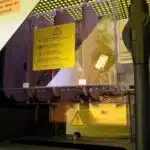
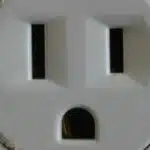
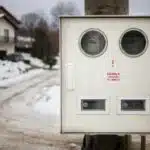
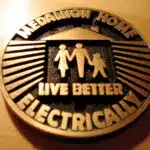


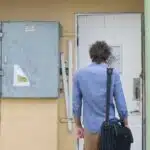
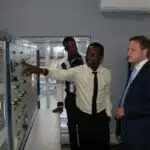


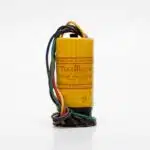


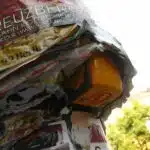



![How To Replace A Single-Pole Wall Switch 19 '... All in all it's just another [switch] in the wall.' ...](https://green-life.blog/wp-content/uploads/2023/05/17xmP5qMtVjq-150x150.jpg.webp)


